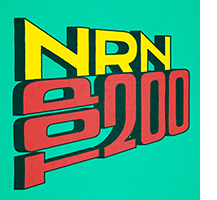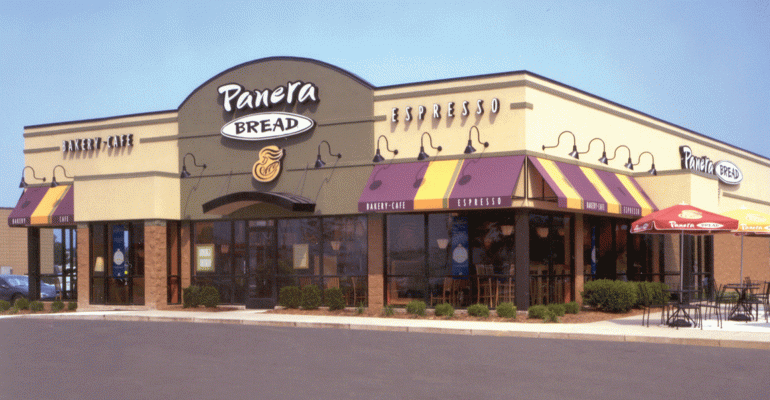 This is part of the Nation’s Restaurant News annual Top 200 report, a proprietary ranking of the foodservice industry’s largest restaurant chains and parent companies.
This is part of the Nation’s Restaurant News annual Top 200 report, a proprietary ranking of the foodservice industry’s largest restaurant chains and parent companies.
Glance at the Top 200 Bakery-Cafe chains ranked by reported or estimated U.S.-systemwide sales and one thing becomes obvious: The brands controlled by acquisition-ready JAB Holdings Co. dominate the roster in that top performing Top 200 segment.
The Bakery-Cafe squad bested all Top 200 segments in year-over-year growth in segment aggregate U.S.-systemwide sales, with a 7.7-percent boost that soundly topped second-place Chicken’s 7.3-percent climb. That hearty sales expansion came despite Bakery-Cafe’s 0.9-percent decrease in Latest-Year total U.S. units, as Bruegger’s Bagels jettisoned a net 41 stores before and after its September acquisition by JAB and Tim Hortons took a 50-net-unit-closures step backwards as it continued to search for the right store type and geographic market mix in the U.S. under relatively new owner Restaurant Brands International.

Within Bakery-Cafe, the holdings of Luxembourg, Germany-based JAB — Panera Bread Co., Einstein Bros. Bagels, Au Bon Pain and Bruegger’s Bagels — and pending acquisition, Pret A Manger, represented 62.5 percent of the eight chains in that Top 200 category, but generated a whopping 83.9 percent of the segment’s Latest-Year $8.1 billion in aggregate U.S. systemwide sales. Acquired by JAB in 2017 for $7.5 billion, Panera, with its $5.5 billion in estimated Latest-Year U.S. sales, accounted for 68 percent of that segmentwide total.
In terms of Latest-Year U.S. system unit counts, the JAB quintet, combined, fielded 76.1 percent of the Bakery-Cafe segment’s aggregate 4,261 domestic stores. Panera’s segment leading 46.7-percent share of domestic year-end units towered nearly three times above that of store-count runner-up, Tim Hortons, with a 17.3-percent share.
The potential competitive advantage enjoyed by the JAB contingent by virtue of common ownership goes beyond economies of scale in purchasing, shared resources for key support services, such as real estate procurement, and better credit rates, if any, into the realm of the business freedom that comes with a move to private ownership from publicly-traded-company status, such as was made by Panera, Einstein and Caribou.
A recent Wall Street Journal article about JAB and its coffee-centered business strategy reported insights by Dave Burwick, chief executive of Peet’s Coffee & Tea, a JAB brand in the Top 200 Beverage-Snack segment, related to how going private helped the once-public and struggling Peet’s. It did so by letting the company focus less on quarterly earnings and more on generating cash to expand the business, such as through reducing inventory while extending vendor accounts payable periods, Burwick indicated, before adding, “They [JAB] don’t give us money, they give us ways to create money.”
Referring to those reported comments by Burwick and other recent public remarks by Ron Shaich, former Panera Bread chief executive, industry analyst Mark Kalinowski, of Kalinowski Equity Research, noted, “Clearly there are some brands here that for them, perhaps, it does make more sense to be privately held.” The veteran analyst has looked at JAB as part of his coverage of Dunkin’ Brands Group Inc. around the rhetorical question on some investor minds: Will Dunkin’ be acquired by JAB at some point?
Kalinowski said that the multiple brands in JAB’s portfolio might also benefit from tests of whether “these concepts can cross sell products,” such as in the case of Coffee & Bagels, a multi-unit Caribou Coffee-Einstein Bros. Bagels mashup that has taken shape during the past two years.
“They own Intelligentsia and they own Stump Town Coffee Roasters and these are generally considered very high-quality coffee companies.” he said of two other JAB holdings. “Maybe there is room for them in a more widespread-footprint brand like a Panera Bread that has a reputation for being high quality? I don’t know [but] there are a lot of things they [JAB] can test with a portfolio like this.”
JAB’s approach is not without its potential downside, Kalinowski indicated. “How do you run so many brands? I think that can get quite challenging,” he said. “At least one theme runs through all that they have acquired, to the best of my knowledge, and that’s caffeine. They seem to know what they are doing in that regard.”
Panera, in its Latest Year, continued to gain traction from its slate of sales-bolstering initiatives, including promotion of additive- and preservative-free “clean” foods, digital engagement through mobile ordering and loyalty programs and in-store kiosks, the use of dedicated catering and delivery kitchens and deployment of in-house delivery teams at more than 1,300 stores and climbing. Its Estimated Sales Per Unit rose 8.4 percent, to $2.8 million, which was just slightly ahead of Pret A Manger’s ESPU of $2.7 million.
But that’s not to suggest that other Top 200 Bakery-Cafe segment players, such as its smallest, by sales, Le Pain Quotidien, don’t have strengths or strategies to succeed.
“LPQ aims to be great, not big. Rather than blanketing America with units, LPQ is targeting only those crown jewel cities where its core audience resides,” said Jack Moran, Le Pain Quotidien chief executive.
Explaining some of the chain’s points of differentiation, Moran continued, “As a metaphor for its quality focus, consider that LPQ creates its signature two-kilo organic sourdough wheat loafs every day from scratch, using only flour, water and salt [and] eschews a cookie-cutter approach to store design, with all furniture and fixtures crafted from antique pine and marble in Belgium for each particular location.”
Among other key competitive differences, Moran explained: Le Pain Quotidien offers table-service in the dining room, where about 80 percent of its sales are generated, and outside of the central business districts of Manhattan, claims a core strength in its weekend brunch and lunch business. “The target audience is highly
educated, discerning about quality, well-traveled, affluent and decidedly urban,” he said, underscoring how his brand contrasts with the “mass-market suburban” concepts or weekday business-district focus or other strategies of some of the segment’s bigger players.
Latest JAB target Pret A Manger, which also has a core business in urban areas, was the only Bakery-Cafe chain besides Panera to notch higher reported or estimated system sales in the Latest Year, with an 11.3-percent bump. The U.K. import increased the scope of its market and added an expansion resource during that period by opening its first three franchised locations in the United States via Compass Group’s Bon Appétit Management Co. at the University of Pennsylvania and University of Chicago.
Read more:
2018 Top 200: Segment Trends
Contact Alan Liddle at [email protected]
Follow him on Twitter: @AJ_NRN


